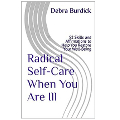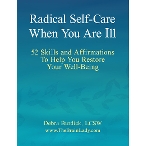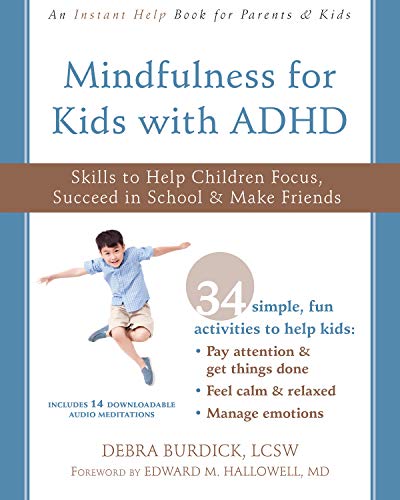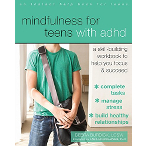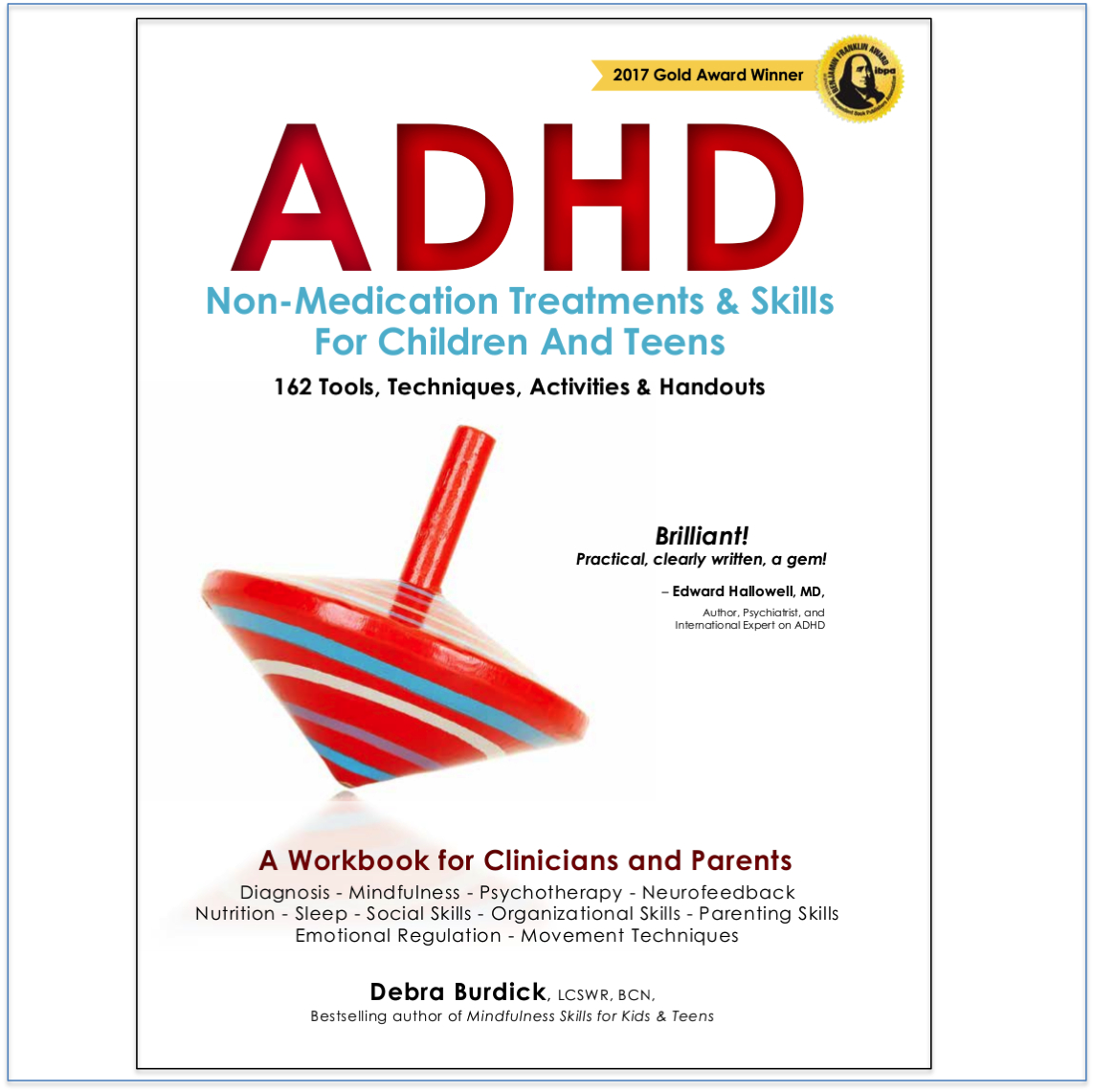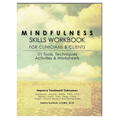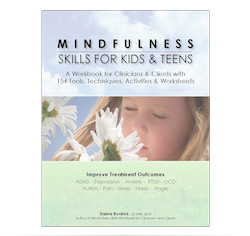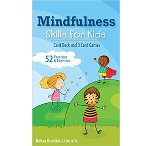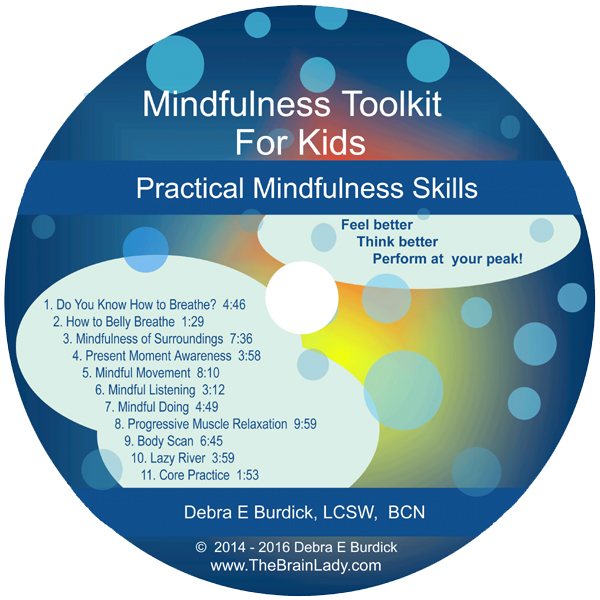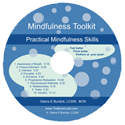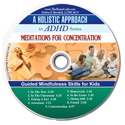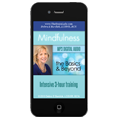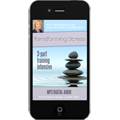Mindfulness
Mindfulness is defined by Jon Kabat-Zin as ‘paying attention to something, in a particular way, on purpose, in the present moment, non-judgementally’. One of the ways I have discovered that truly helps people improve their lives is to teach them a toolkit of Mindfulness skills they can use every day.
Why bother with Mindfulness? Because the research is compelling! Studies repeatedly show that practicing mindfulness improves every aspect of our physical, emotional, and spiritual life. A quick summary of the positive effects of mindfulness includes improvements in: depression, anxiety, concentration, impulse control (good news for people with ADHD), sense of well-being, long term mental health, addictions, immune function, anger, hope, life satisfaction, compassion for self and others, chronic low back pain, fibromyalgia, rheumatoid arthritis, and sleep and much more.
Neuroscience informs us about the concept of Neuroplasticity – that the brain can change and rewire itself. Studies show that practicing mindfulness leads to structural as well as functional changes in the brain as measured by MRI’s, SPECT scans, and EEG studies. Therefore, mindfulness is an excellent way to deliberately engage the Neuroplasticity of the brain to rewire or reprogram the brain so it works more effectively. This is really good news!
 Mindfulness often starts by learning to become aware of our breath. We set the intention to focus on our breathing. Every time we notice that we are distracted and not thinking about our breathing we accept it, dismiss the thought, and return our attention to our breath. This process is very simple and easy to do anywhere.
Mindfulness often starts by learning to become aware of our breath. We set the intention to focus on our breathing. Every time we notice that we are distracted and not thinking about our breathing we accept it, dismiss the thought, and return our attention to our breath. This process is very simple and easy to do anywhere.
Other mindfulness skills include:
- Mindfulness of Breath
- Present Moment Awareness
- Mindfulness of Thoughts
- Mindfulness of Feelings
- Mindfulness of Physical Body
- Mindfulness of Relationships
- Mindfulness of Tasks
- Mindfulness of Words
- Mindfulness of Intention
- Mindfulness of Intuition
- Mindfulness of Motion
- Core sitting practice
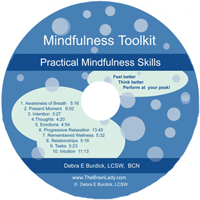 The Mindfulness Toolkit CD contains ten guided mindfulness skills you can use every day and teach to your family, clients, patients, or students.
The Mindfulness Toolkit CD contains ten guided mindfulness skills you can use every day and teach to your family, clients, patients, or students.
Learn more here: Mindfulness Toolkit CD
Let me show you a great way to get started. First, I’m going to teach you a breathing technique that activates the parasympathetic nervous system and then I will lead you in a short awareness of breath mindfulness exercise.
By changing our breathing pattern we indirectly change our physiology. When we breathe in, inhale, we activate our sympathetic nervous system which activates our physiology as well as our stress response. This is often called the fight or flight response. When we activate our sympathetic nervous system our heart rate increases, pupils dilate, blood vessels constrict, sweat increases, and the digestive system slows down. We get more alert and overall tension increases.
When we breathe out, or exhale we activate our parasympathetic nervous system. The parasympathetic nervous system is responsible for the ‘rest and digest’ activities that occur when the body is at rest. Therefore, when we exhale our heart rate slows down, intestinal and glandular activity increases and we generally feel more relaxed.
A breathing technique that I find very helpful in de-activating the stress response consists of breathing in through the nose to the count of four and breathing out through the mouth to the count of eight. Thus we activate the parasympathetic nervous system twice as long as the sympathetic nervous system with a net result of calming our physiology and stress response.
Try this simple technique as often as you think of it. Breathe in through your nose to the count of four and out through your mouth to the count of eight. When you exhale, purse your lips and blow gently like you are blowing out a candle or blowing a bubble. This will help you slow down the exhale. Don’t worry if you nose is stuffy, just breathe in and out through your mouth if you must.
When doing this breathing exercise it is helpful to take a deep belly breath instead of a shallow chest breath. Most of us tend to breathe shallow chest breaths most of the time, unless we have increased our awareness of our breathing and have learned to belly breathe. A belly breath is deeper, allowing the diaphragm to relax and the lungs to expand downward. This results in more oxygen being provided to the body with each breath.
Practice this breathing technique often throughout the day. You might choose to take a nice belly breath every time you answer the phone, when you get into the car, when you visit the bathroom, before you eat, and certainly if you are feeling stressed. Pick a few times that work best for you to help you get in the habit of doing one to three deep belly breaths in through your nose to the count of four and out through your mouth to the count of eight.
By practicing this breathing technique, you will effectively lower your stress response and improve your physical, emotional, and cognitive health.
Learn more here: Mindfulness Skills

